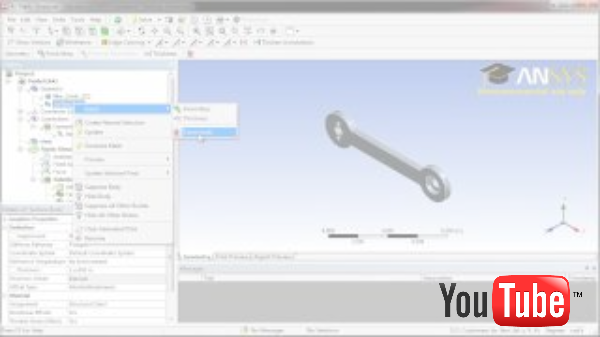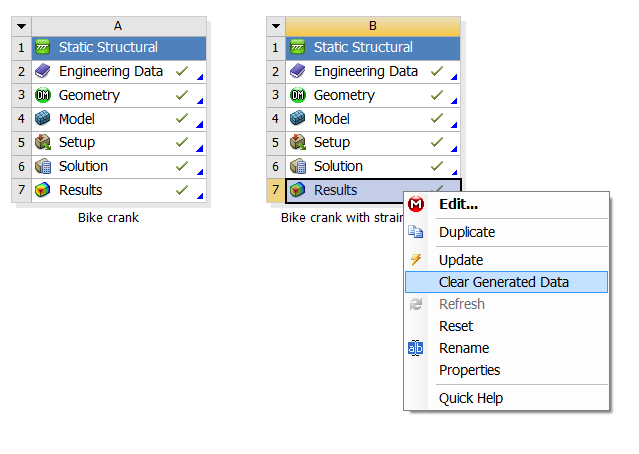
This page covers follow-on exercises to the bike crank tutorial. In particular, it shows how to add a strain gage to the ANSYS model to predict the strain that would be measured by a gage mounted on the crank model.
Strain Gage Modeling
The following video shows how to add a surface to the crank model to find the average strain over the area covered by a strain gauge mounted on the crank. The video includes audio as do other videos on this page. (Note that the procedure shown in the video to connect the crank arm and the gage doesn't always work. An alternate procedure to manually connect the two entities is shown in a later video below.)

An overview of the procedure followed in the video and explanation of the associated steps can be found in this powerpoint presentation from MAE 3272, Spring 2013.
Our ANSYS Mechanical 14.0 model with a strain gage mounted can be downloaded here for your review. Download the .wbpz file and double-click on it to load it in ANSYS Workbench. To save the file in the usual .wbpj format, select File > Save as. To reduce the file size, the results have not been saved. You'll have to clear all results by selecting (right-click)Results > Clear Generated Data in the project page. Then, re-solve in ANSYS Mechanical (the red M in the taskbar) to see the results.

Manually Connecting Crank Arm and Gage
The above video shows how to add a connection between the crank arm and the gage using Create Automatic Connections. But this automated procedure doesn't always work. In that case, one has to connect the two entities manually using Insert > Manual Contact Region as shown in the video below.

Meshing with Hexahedrals using the Multi-Zone Method
The multi-zone method in ANSYS
- Gives hexahedral or box elements for certain geometries
- Chops up the domain into regions which can be "hex-meshed". These regions often have a shape that can be created though extrusion
- The default meshing method often gives a tetrahedral mesh which has lower accuracy than a hex mesh for the same number of nodes. The advantage of tetrahedrals is that you can mesh any general geometry while pure hex meshes can be created only for some geometries.
The steps for using the multi-zone meshing method for the bike crank geometry are shown in the video below.

Creating a New Coordinate System in ANSYS Mechanical
If your default coordinate system is not centered on one of the holes in the crank, or you wish to learn how to define new coordinate systems inside the mechanical window, please refer to the following video:





